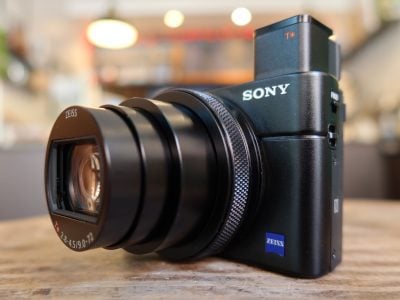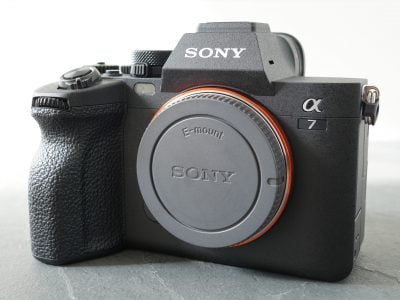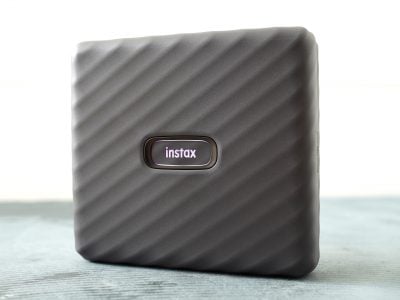Canon Powershot A2100 IS
-
-
Written by Gordon Laing
Canon Powershot A2100 IS verdict
Canon’s Powershot A2100 IS is a good value compact that delivers excellent image quality, a respectable optical zoom range and, despite the lack of manual exposure controls, a good balance between fully automatic modes and more advanced operation. Though its 6X zoom doesn’t deliver the wide angle performance of its competitors, it outguns them at the telephoto end of the zoom range and has image stabilisation to match – enabling hand held shot at maximum zoom range down to a tenth of a second.
The A2100’s Digic 4 Processor is a step up from the digic III of its predecessor, offering faster performance, improved quality throughout the ISO range improved face detection and some clever features like Face self-timer and i-Contrast dynamic range enhancement. One area which hasn’t benefited is video, with no HD recording modes on offer, but the quality of its standard resolution video is pretty good.
Compared to Sony Cyber-shot DSC-W270 / W290
In terms of build quality, there’s little to choose between the Canon Powershot A2100 IS and the Sony Cyber-shot DSC-W270 / W290. Both cameras are well-engineered and have a quality feel about them. The Canon is bigger overall, not as pocket-sized as the Sony, but provides plenty of grip and accessible Controls for those with bigger hands.
Probably the biggest difference between the two models is in the zoom range. The Powershot’s range is broader than the Cyber-shot W270 / W290’s and its maximum 216mm equivalent zoom will get you a lot closer to the action than the Cyber-shot’s 140mm equivalent. But at the other end of the range, the Sony’s 28mm wide-angle equivalent will get you out of a tight corner much more effectively than the 36mm equivalent of the Canon.
The Powershot’s new Digic 4 processor tracks faces like a terrier and focussing is very accurate. It also has a handy new face-self-timer mode so you can easily include yourself in group shots. If you take a lot of people pictures and particularly group shots though, you might find the the Cyber-shot’s smile detection more useful.
There’s little to choose between the screens on both models. The Canon has a slightly larger 3in screen than the 2.7in model on the Sony W270, although the difference is smaller than the measurements suggest, it has the same number of pixels and there’s not much to separate them in terms of brightness, image quality or viewability in bright sunlight. If screen size is really important and you prefer Sony’s styling though, then go for the otherwise identical W290 version which features a 3in model; note the W290 is exclusive to Jessops in the UK.
The Canon outperforms the Sony in multishot mode, but The Cyber-shot is faster to recycle the flash between shots and the flash itself is slightly more powerful that the Powershot’s. That said, some may prefer the AA operation of the Canon.
In terms of image quality, we prefered the sharper, more detailed, less processed, look of the Powershot A2100 IS to those of the Cyber-shot DCS-W270 / W290. The Canon’s image’s were also sharper throughout the ISO range. The lack of HD video on the Powershot is however a disadvantage compared with the Cyber-shot’s 1280x720p mode. See our Sony Cyber-shot DSC-W270 / W290 review for more details.
Compared to Panasonic Lumix DMC-FS25
As with the Sony Cyber-shot DSC-W270 / W290, the Canon Powershot A2100 IS outguns the Panasonic Lumix DMC-FS25 both in the range and reach of its zoom compared with the Canon’s 6x zoom (see above for detailed specfiication). The Lumix 5x zoom goes from 29-145mm (35mm equivalent), although this shorter range does at least include useful wide-angle coverage that’s sorely missing from the Canon.
The Lumix is slimmer than the Canon, but it doesn’t quite share the Powershot’s solid build quality and feels a little flimsy. Some may find the controls less accessable too – for example using a switch to change from record to playback rather than a button may mean the camera’s not in the right mode to grab a spontaneous shot.
In terms of image quality, the Lumix compares well with the Powershot’s crisp, well defined details, producing sharp punchy images with good edge definition. At the higher ISO ranges, however, we feel the Lumix overcooks it slightly.
The Powershot also loses out to the Lumix on video quality; though not quite HD, the Panasonic’s top end 848×480 pixel WVGA mode provides a higher resolution widescreen alternative to the Canons best effort 640×480 VGA video.
One feature where the Panasonic beats the Powershot hands down is the screen. Though the same size and with the same pixel count as the Canon’s, the Lumix offers Power LCD and High Angle modes which make the screen easier to see in bright sunlight and when shooting with it held above your head. This along with the wider lens coverage could make it a better choice for some. Look out for our review of the Panasonic FS25 soon!
Canon PowerShot A2100 IS final verdict
Canon’s PowerShot A2100 IS is a good value compact with a longer than average zoom range, excellent image quality and very effective image stabilisation. Although it lacks the wide angle coverage of the Sony Cyber-shot DCS-W270 / W290 and the Panasonic Lumix DMC-FS25, it has a broader overall zoom range and a longer telephoto equivalent of 216mm.
Though larger than many compacts, the PowerShot sits well in the hand and it’s controls are easy to use, providing fast and intuitive access to the important settings. Rechargeable AA batteries also provide a more flexible alternative to a proprietary Lithium Ion pack, although flash recycling can be slow.
The 3in / 230k pixel screen, like most compact LCD panels is difficult to see in bright sunlight, but in all other respects provides an excellent view for both recording and playback.
Though it has no manual exposure controls, there are plenty of options for manual setting of ISO, white balance, auto focussing and other parameters, and for point and shoot operation the auto and easy modes have been augmented with effective scene detection.
The Canon PowerShot A2100 IS produces very high quality images in terms of detail and exposure in a variety of conditions. At low ISO settings detail is sharp edge-to-edge with little evidence of noise in the shadow regions and only minimal fringing in demanding conditions. At higher ISO settings the Powershot’s images benefit from subtle noise reduction that maintains image detail whils removing the worst, (though by no means all) of the noise.
So if you’re after a solid compact with good automatic performance, decent image quality, the convenience of AA batteries and a broad zoom range (albeit lacking true wide angle), then the Canon PowerShot A2100 IS is a great choice and represents good value for money. Like its predecessor, it’s easy to Recommend.
|
Bad points | Scores (relative to 2009 compacts) |
 | ||
Build quality: Image quality: Handling: Specification: Value:
Overall: |
16 / 20 17 / 20 17 / 20 16 / 20 17 / 20
83% | |||
| ||||






